Why travellers from the UK should visit Iceland first after the pandemic
By Michael Chapman
With its wide-open spaces and focus on health and well-being, Iceland is an oasis in a post-COVID-19 world.
Throughout the last year, we have seen the coronavirus pandemic drastically alter the world in which we live. Stuck in our homes like passengers waiting for a plane that never arrives, we have seen this terrible virus disregard global borders, ravaging wherever and whenever people tend to gather.
Staring at the same rooms, the same laptop-screen, the same people, we have become both nervous of the outside world, and deeply yearnful for it. For those in the UK and elsewhere, this position has proved uncomfortable; a waiting game to be endured, regardless of how long the road ahead might prove to be.
We here at Bubble hotel know all too well how many travellers were excited to visit Iceland in 2020, only to be disappointed when circumstances made such a trip impossible. Having not experienced Iceland so quiet and empty in many years, there is a growing feeling among those who live here that the sooner guests return, the better.

Fortunately, as we move into 2021, both Iceland and the UK are now underway rolling out the vaccine. Many predict the two nations will be among the first to achieve herd-immunity in Europe, though that has yet to be proven correct. While the situation may appear dire today, there is a genuine hope that a travel corridor will open between Iceland and the UK by mid-year.
Just like health officials and governments the world over, tourism agencies closely monitor the situation and are finally beginning to see signs of healing. In other words, those looking to reawaken their ambition to travel from the UK to Iceland would be well advised to start planning now. If that describes you, then rest assured, this is a good jumping-off point!
Throughout the last year, we have seen the coronavirus pandemic drastically alter the world in which we live. Stuck in our homes like passengers waiting for a plane that never arrives, we have seen this terrible virus disregard global borders, ravaging wherever and whenever people tend to gather.
Staring at the same rooms, the same laptop-screen, the same people, we have become both nervous of the outside world, and deeply yearnful for it. For those in the UK and elsewhere, this position has proved uncomfortable; a waiting game to be endured, regardless of how long the road ahead might prove to be.
We here at Bubble hotel know all too well how many travellers were excited to visit Iceland in 2020, only to be disappointed when circumstances made such a trip impossible. Having not experienced Iceland so quiet and empty in many years, there is a growing feeling among those who live here that the sooner guests return, the better.

Fortunately, as we move into 2021, both Iceland and the UK are now underway rolling out the vaccine. Many predict the two nations will be among the first to achieve herd-immunity in Europe, though that has yet to be proven correct. While the situation may appear dire today, there is a genuine hope that a travel corridor will open between Iceland and the UK by mid-year.
Just like health officials and governments the world over, tourism agencies closely monitor the situation and are finally beginning to see signs of healing. In other words, those looking to reawaken their ambition to travel from the UK to Iceland would be well advised to start planning now. If that describes you, then rest assured, this is a good jumping-off point!
Why visit Iceland from the UK?
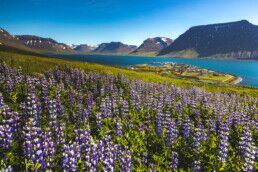
Those who have visited Iceland in previous years can attest to the beauty, adventure and local character of this soul-stirring place. With its advantageous location between North America and Europe, most people forget that Iceland is only 800 kilometres or so from Scotland. That’s closer than Scotland is to France by 400 kilometres, which should go some way putting into context just how adjacent our two islands are.
Such proximity has bred a neighbourly relationship between Iceland and the UK—save for the odd Cod War or two—and Icelanders are more than welcoming to their cousins from the West. 99% of the population speak near-perfect English, and many have ties to family in the UK or have even lived there for a time themselves.

With a nickname like ‘the Land of Ice and Fire‘, it’s no surprise that this is a highly diverse landscape of staggering appeal, offering UK travellers sub-arctic sights and experiences unique to this island. While Stevenage, or perhaps, Shropshire, are no doubt lovely in their way (—alright, not Stevenage), there is no matching the spectacle and drama the Icelandic landscape possesses.
In better times, visitors flocked here in their millions to look upon its awe-inspiring nature, its ethereal glacier lagoons, smokey mountain tops and remote coastal settlements. These allures have become more magnetic for those yet to visit, heightened over recent months, transforming from something people would like to see to something people need to see. In 2021, let us hope they get their chance.
Why visit Iceland from the UK?

Those who have visited Iceland in previous years can attest to the beauty, adventure and local character of this soul-stirring place. With its advantageous location between North America and Europe, most people forget that Iceland is only 800 kilometres or so from Scotland. That’s closer than Scotland is to France by 400 kilometres, which should go some way putting into context just how adjacent our two islands are.
Such proximity has bred a neighbourly relationship between Iceland and the UK—save for the odd Cod War or two—and Icelanders are more than welcoming to their cousins from the West. 99% of the population speak near-perfect English, and many have ties to family in the UK or have even lived there for a time themselves.

With a nickname like ‘the Land of Ice and Fire’, it’s no surprise that this is a highly diverse landscape of staggering appeal, offering UK travellers sub-arctic sights and experiences unique to this island. While Stevenage, or perhaps, Shropshire, are no doubt lovely in their way (—alright, not Stevenage), there is no matching the spectacle and drama the Icelandic landscape possesses.
In better times, visitors flocked here in their millions to look upon its awe-inspiring nature, its ethereal glacier lagoons, smokey mountain tops and remote coastal settlements. These allures have become more magnetic for those yet to visit, heightened over recent months, transforming from something people would like to see to something people need to see. In 2021, let us hope they get their chance.
Iceland has an absence of crowds.

Iceland is famous for its vast landscapes, devoid of people, structures and highways. Meadows blend seamlessly into volcanic lava-fields, black sand beaches and deserts, culminating in an island that, in some parts, is as open as it is mountainous in others.
Iceland is the least populated country in Europe, with two-thirds of its 357,000 people living in the Capital Region alone. The rest of the island consists of either quaint farmland or stark, untameable wilderness—with the odd village or town thrown in for good measure.
In any case, those who step beyond Reykjavík’s borders will find themselves alone soon enough. Surrounded by the overwhelming magnificence of Iceland’s nature, you’ll find the solitude cleansing and much-needed.
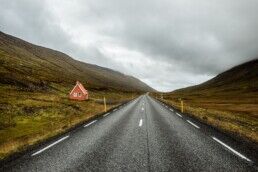
Summer guests will experience a land of eternal light, where the Midnight Sun remains high in the sky deep into the evening. On the other hand, those in winter will discover an entirely different landscape, one glazed in snow and frequented in cherished moments by the sudden appearance of the auroras above.
Given that overseas travel will, in all likelihood, rise slowly rather than surge, guests who make their way to Iceland sooner than others will discover the most popular attractions without the distraction of crowds. Again, time and space allow for a deeper connection to the environment, providing more value and depth to the experience.
Iceland has an absence of crowds.

Iceland is famous for its vast landscapes, devoid of people, structures and highways. Meadows blend seamlessly into volcanic lava-fields, black sand beaches and deserts, culminating in an island that, in some parts, is as open as it is mountainous in others.
Iceland is the least populated country in Europe, with two-thirds of its 357,000 people living in the Capital Region alone. The rest of the island consists of either quaint farmland or stark, untameable wilderness—with the odd village or town thrown in for good measure.
In any case, those who step beyond Reykjavík’s borders will find themselves alone soon enough. Surrounded by the overwhelming magnificence of Iceland’s nature, you’ll find the solitude cleansing and much-needed.

Summer guests will experience a land of eternal light, where the Midnight Sun remains high in the sky deep into the evening. On the other hand, those in winter will discover an entirely different landscape, one glazed in snow and frequented in cherished moments by the sudden appearance of the auroras above.
Given that overseas travel will, in all likelihood, rise slowly rather than surge, guests who make their way to Iceland sooner than others will discover the most popular attractions without the distraction of crowds. Again, time and space allow for a deeper connection to the environment, providing more value and depth to the experience.
Short flights from the UK to Iceland
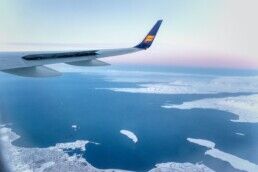
Travelling between the UK and Iceland is about as easy a flight as one could ask for. All it takes is a power nap, a packet of peanuts and one in-flight movie to cross the Norwegian Sea, fast arriving in a location that is incomparable to the UK in almost every way.
Flying between London and Reykjavík takes only three hours. Flying from Edinburgh takes it down to a meagre 2 hours and 5 minutes. Frankly, I’ve been on bus rides that felt longer. Short flights are great for avoiding exhaustion, and allow you to feed-off the pre-arrival excitement before becoming bored of the commute.
Another benefit of short flights is that there is no need to sacrifice your precious time merely travelling to the destination you wish to explore. If you were to leave from the UK in the early morning, you would have the entire day left to explore West Iceland upon your arrival.
Such flexibility is not possible when travelling to destinations further afield. For those in the UK who can’t wait to touch down on foreign soil, getting to Iceland is a quick and straightforward affair.
Short flights from the UK to Iceland

Travelling between the UK and Iceland is about as easy a flight as one could ask for. All it takes is a power nap, a packet of peanuts and one in-flight movie to cross the Norwegian Sea, fast arriving in a location that is incomparable to the UK in almost every way.
Flying between London and Reykjavík takes only three hours. Flying from Edinburgh takes it down to a meagre 2 hours and 5 minutes. Frankly, I’ve been on bus rides that felt longer. Short flights are great for avoiding exhaustion, and allow you to feed-off the pre-arrival excitement before becoming bored of the commute.
Another benefit of short flights is that there is no need to sacrifice your precious time merely travelling to the destination you wish to explore. If you were to leave from the UK in the early morning, you would have the entire day left to explore West Iceland upon your arrival.
Such flexibility is not possible when travelling to destinations further afield. For those in the UK who can’t wait to touch down on foreign soil, getting to Iceland is a quick and straightforward affair.
Icelanders respect public health.

By and large, Icelanders are a forward-thinking people, not prone to conspiracies, hysteria or dwelling on problems long-term. While their choice in woollen sweaters might raise a few eyebrows, the way they’ve handled the coronavirus pandemic has been met with nothing but praise.
When news of the virus first hit, measures were put in place almost at once to combat the spread. The government set a maximum limit on public gatherings. Bars, gyms and swimming pools were closed. Restaurants and cafes were only permitted to remain open until early evening.
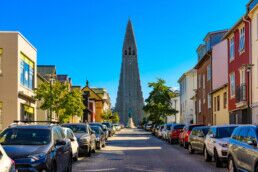
While, of course, there has been heated discussion as to the best path forward, this is true of all nations, and by and large, Iceland has proven itself to be well equipped in handling the crisis.
Walking through the city, you’ll find most people wear masks and sanitise their hands after being outside or before entering shops. For now, the capital streets are quiet, with many shops and popular bars on hiatus. Though there has been small pockets of resistance, the vast majority of the Icelandic population understands that, for now, everybody should take precautions.
Awareness of the risks have been bolstered by both the Icelandic Directorate of Health and deCode Genetics, a Reykjavík-based company that specialises in understanding more about human genetics.
By sharing data and information between them, both organisations have made enormous leaps in slowing down the local infection rate, not mentioning the greater understanding gained from stringent tracking protocols.
Icelanders respect public health.

By and large, Icelanders are a forward-thinking people, not prone to conspiracies, hysteria or dwelling on problems long-term. While their choice in woollen sweaters might raise a few eyebrows, the way they’ve handled the coronavirus pandemic has been met with nothing but praise.
When news of the virus first hit, measures were put in place almost at once to combat the spread. The government set a maximum limit on public gatherings. Bars, gyms and swimming pools were closed. Restaurants and cafes were only permitted to remain open until early evening.

While, of course, there has been heated discussion as to the best path forward, this is true of all nations, and by and large, Iceland has proven itself to be well equipped in handling the crisis.
Walking through the city, you’ll find most people wear masks and sanitise their hands after being outside or before entering shops. For now, the capital streets are quiet, with many shops and popular bars on hiatus. Though there has been small pockets of resistance, the vast majority of the Icelandic population understands that, for now, everybody should take precautions.
Awareness of the risks have been bolstered by both the Icelandic Directorate of Health and deCode Genetics, a Reykjavík-based company that specialises in understanding more about human genetics.
By sharing data and information between them, both organisations have made enormous leaps in slowing down the local infection rate, not mentioning the greater understanding gained from stringent tracking protocols.
Iceland is a family-friendly destination
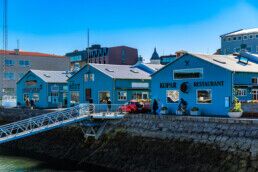
Iceland is a treat for the whole family, providing memories that are sure to define a child’s formative years. Kids of all ages will find Iceland’s countryside a fantastical dreamscape, one that inspires their imagination, fuels their passion for the environment, and offers a fascinating glimpse into another way-of-life.
Reykjavík has several museums suited to families, the most fun of which is the Perlan Museum on Öskjuhlíð Hill. Inside this iconic domed building, guests will find the incredible Wonders of Iceland exhibition. This showcase includes Iceland’s only planetarium, complete with Northern Lights show, as well as artificial bird cliffs and a meticulously recreated ice tunnel.
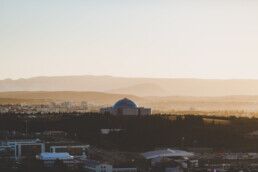
Of course, none of this mentions the Observation Deck that encircles Perlan dome ceiling. Offering 360-degree panoramas of Reykjavík, Faxafloi Bay and the epic table-top mountain, Esja, there is no better place to give your family an appreciation of just how surrounded the capital is by lava fields and encroaching mountains.
Most families will want to escape the city during their time here, venturing out into the wilds searching for Iceland’s top attractions. Thankfully, renting a suitable vehicle is easy, and can be picked-up straight outside the arrivals hall of Keflavik International Airport. Such autonomy is perfect for families looking to truly make their time in Iceland count as it allows for quick diversions and comfortable travel.
Iceland is a family-friendly destination

Iceland is a treat for the whole family, providing memories that are sure to define a child’s formative years. Kids of all ages will find Iceland’s countryside a fantastical dreamscape, one that inspires their imagination, fuels their passion for the environment, and offers a fascinating glimpse into another way-of-life.
Reykjavík has several museums suited to families, the most fun of which is the Perlan Museum on Öskjuhlíð Hill. Inside this iconic domed building, guests will find the incredible Wonders of Iceland exhibition. This showcase includes Iceland’s only planetarium, complete with Northern Lights show, as well as artificial bird cliffs and a meticulously recreated ice tunnel.

Of course, none of this mentions the Observation Deck that encircles Perlan dome ceiling. Offering 360-degree panoramas of Reykjavík, Faxafloi Bay and the epic table-top mountain, Esja, there is no better place to give your family an appreciation of just how surrounded the capital is by lava fields and encroaching mountains.
Most families will want to escape the city during their time here, venturing out into the wilds searching for Iceland’s top attractions. Thankfully, renting a suitable vehicle is easy, and can be picked-up straight outside the arrivals hall of Keflavik International Airport. Such autonomy is perfect for families looking to truly make their time in Iceland count as it allows for quick diversions and comfortable travel.
Natural attractions in Iceland are (mostly) free-to-visit

Aside from petrol costs and parking fees, there’s not much in the way of extra charges when visiting Iceland’s major natural attractions. Parking fees can reach up to 800 ISK, payable by credit card on most sites. This relative lack of expenditure can provide relief to travellers preoccupied with how expensive Iceland can be.
Waterfalls like Seljalandsfoss, Gullfoss and Dettifoss are all free to appreciate up-close. So too are the island’s many canyons, black beaches, nature reserves and turf houses. A trip to the heavenly glacier lagoon, Jökulsárlón, is another priceless experience, and there is no cost to appreciating the weatherbeaten lava fields of Reykjanes or Lake Mývatn.

There are only a few attractions where an extra expense is necessary to pay a visit. The most famous example of this is Kerið volcanic crater on the Golden Circle sightseeing route, which has an entrance fee stipulated by the landowners.
Glaciers and ice caves require tour parties to be led by a professional guide given the inherent risk involved, as do other activities like snorkelling, horseback riding and ATV drives. In all the above cases, pre-booked excursions are necessary.
The same can be said for entering the volcanic caldera, Þríhnúkagígur, on the Reykjanes Peninsula, or the Icelandic highlands, which are largely inaccessible to holiday drivers.
Natural attractions in Iceland are (mostly) free-to-visit

Aside from petrol costs and parking fees, there’s not much in the way of extra charges when visiting Iceland’s major natural attractions. Parking fees can reach up to 800 ISK, payable by credit card on most sites. This relative lack of expenditure can provide relief to travellers preoccupied with how expensive Iceland can be.
Waterfalls like Seljalandsfoss, Gullfoss and Dettifoss are all free to appreciate up-close. So too are the island’s many canyons, black beaches, nature reserves and turf houses. A trip to the heavenly glacier lagoon, Jökulsárlón, is another priceless experience, and there is no cost to appreciating the weatherbeaten lava fields of Reykjanes or Lake Mývatn.

There are only a few attractions where an extra expense is necessary to pay a visit. The most famous example of this is Kerið volcanic crater on the Golden Circle sightseeing route, which has an entrance fee stipulated by the landowners.
Glaciers and ice caves require tour parties to be led by a professional guide given the inherent risk involved, as do other activities like snorkelling, horseback riding and ATV drives. In all the above cases, pre-booked excursions are necessary.
The same can be said for entering the volcanic caldera, Þríhnúkagígur, on the Reykjanes Peninsula, or the Icelandic highlands, which are largely inaccessible to holiday drivers.
How is Iceland dealing with the coronavirus pandemic?

Iceland is ranked 7th globally (80.1/98) on the Lowy Institute’s COVID-19 performance index, which measures how countries with comparable data have handled confirmed coronavirus cases domestically. By comparison, New Zealand, Vietnam and Taiwan are, as it stands, the top three ranking nations.
Our current predicament with the coronavirus is not the first time Iceland fell victim to outside contamination, having suffered an influenza pandemic after two ships brought it to the island in October 1918. In no less than a month of a half, 60% of Reykjavík residents had been infected. Over a century later, the Icelandic government appears to have learnt from its mistakes.
Like almost everywhere else, Iceland quickly imposed strict border controls to protect the domestic populace from outside infection. Since June 2020, tourists have been welcome back to Iceland given they follow the new regulations.

All new arrivals were faced with a decision as to whether they be tested at the border, or forgo testing and opt for a 14-day quarantine instead. Those tested at the border require only 5-days quarantine before being tested for a second time at a health clinic in Reykjavík.
A companion app, Rakning C-19, informs the subject within 24 hours as to whether their result is positive or negative, as well as tracks movement throughout the quarantine period. Those in quarantine are not permitted to leave their hotel.
Border regulations have changed throughout the pandemic, and are liable to adapt again. Please take some time perusing the official government website www.covid.is for the latest information before you travel. You can also find more useful details related to travelling to Iceland from the UK at the Icelandic Tourist Board and the Directorate of Health.
Keep up to date with the latest COVID-10 statistics in Iceland here.
As it stands currently, travellers from the EU that have a certification proving they have been vaccinated will be allowed entry into the country without the need to quarantine. Given the UK’s recent departure from the EU, this exemption does not yet apply to British travellers, though it will only be a matter of time until this rule is relaxed.
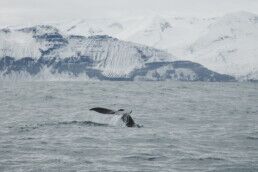
How is Iceland dealing with the coronavirus pandemic?

Iceland is ranked 7th globally (80.1/98) on the Lowy Institute’s COVID-19 performance index, which measures how countries with comparable data have handled confirmed coronavirus cases domestically. By comparison, New Zealand, Vietnam and Taiwan are, as it stands, the top three ranking nations.
Our current predicament with the coronavirus is not the first time Iceland fell victim to outside contamination, having suffered an influenza pandemic after two ships brought it to the island in October 1918. In no less than a month of a half, 60% of Reykjavík residents had been infected. Over a century later, the Icelandic government appears to have learnt from its mistakes.
Like almost everywhere else, Iceland quickly imposed strict border controls to protect the domestic populace from outside infection. Since June 2020, tourists have been welcome back to Iceland given they follow the new regulations.

All new arrivals were faced with a decision as to whether they be tested at the border, or forgo testing and opt for a 14-day quarantine instead. Those tested at the border require only 5-days quarantine before being tested for a second time at a health clinic in Reykjavík.
A companion app, Rakning C-19, informs the subject within 24 hours as to whether their result is positive or negative, as well as tracks movement throughout the quarantine period. Those in quarantine are not permitted to leave their hotel.
Border regulations have changed throughout the pandemic, and are liable to adapt again. Please take some time perusing the official government website www.covid.is for the latest information before you travel. You can also find more useful details related to travelling to Iceland from the UK at the Icelandic Tourist Board and the Directorate of Health.
Keep up to date with the latest COVID-10 statistics in Iceland here.
As it stands currently, travellers from the EU that have a certification proving they have been vaccinated will be allowed entry into the country without the need to quarantine. Given the UK’s recent departure from the EU, this exemption does not yet apply to British travellers, though it will only be a matter of time until this rule is relaxed.

Hope for the Future
The few COVID-19 infections we are now seeing in Iceland instil real hope that 2021 might finally see this virus conquered. It’s been a long time coming, and while there may be some miles to go, we seem to be at a stage in the pandemic where it is not considered overly optimistic breathing small sighs of relief.
If there is a lesson to be learnt from COVID-19, perhaps it is that our vulnerability is what binds us most. So too does our mutual longing to meet friends and family, visit far-away places, sculpt new relationships, and live unhampered by fear and regulation.
When COVID-19 is brought to its knees—as, indeed, it will be—we’ll all have a chance to revisit the plans we’ve been forced to put on hold. Trips to Iceland, long in the making, can finally be realised, providing the respite and rejuvenation so needed after the troubles this previous year.
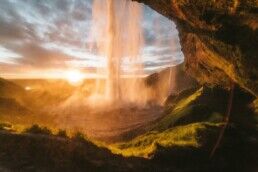
Update as of 23rd March 2021: The above article lays out the entry rules currently stipulated by the Icelandic government, and thus does not apply to those whose own home countries have forbidden travel. Currently, the UK is imposing fines to anyone taking foreign holidays.
Hope for the Future
The few COVID-19 infections we are now seeing in Iceland instil real hope that 2021 might finally see this virus conquered. It’s been a long time coming, and while there may be some miles to go, we seem to be at a stage in the pandemic where it is not considered overly optimistic breathing small sighs of relief.
If there is a lesson to be learnt from COVID-19, perhaps it is that our vulnerability is what binds us most. So too does our mutual longing to meet friends and family, visit far-away places, sculpt new relationships, and live unhampered by fear and regulation.
When COVID-19 is brought to its knees—as, indeed, it will be—we’ll all have a chance to revisit the plans we’ve been forced to put on hold. Trips to Iceland, long in the making, can finally be realised, providing the respite and rejuvenation so needed after the troubles this previous year.

Update as of 23rd March 2021: The above article lays out the entry rules currently stipulated by the Icelandic government, and thus does not apply to those whose own home countries have forbidden travel. Currently, the UK is imposing fines to anyone taking foreign holidays.